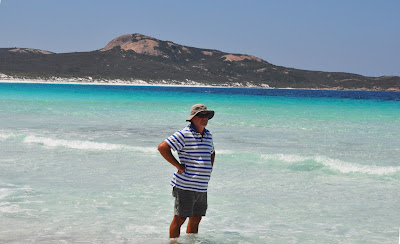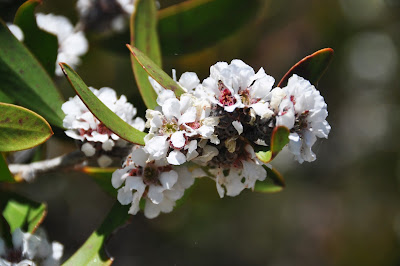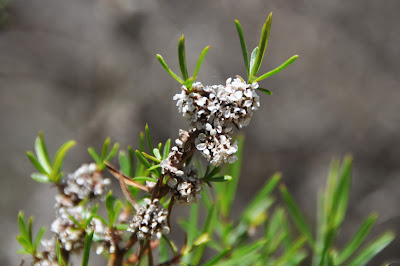DAY 133 – CAPE LE GRANDE NATIONAL PARK….
Another big
day planned for today as we take off to explore Cape Le Grande National
Park… The beaches here are described as
some of Australia’s finest beaches and it not hard to see why…
Lucky Bay
was our first stop, and is one of Australia’s most well known beaches. It’s
known for pristine white sand that squeaks as you walk on it down to the water,
and that it does. It is also known for
it’s crystal clear blue and turquoise water and is often advertised as a Paradise
in WA. In face pristine and perfect are
two words that reflect the absolute beauty of Lucky Bay.
Of course we
had headed for the beach, to test that squeaky white sand and also to paddle
our toes in the pristine water and boy was it cold… We Queenslanders are wooses
when it comes to cold water… we are used to the nice temperate warm waters of
the Queensland coast. There were plenty
of people in swimming… made us cold just watching them.
There was
quite a bit of sea grass stocked up on the beach, in fact it was inches deep in
places, which kind of takes away from the beauty a little, although there is no
denying the beautiful mixes of colours on this coast….
After a
wander along the beach, we headed up to the picnic area to have our morning
tea.
Lucky Bay
has National Park camping which works out at about $13 a night, and there are
toilets there but no showers. If we were
staying in this area longer, it would have been worth coming out here and
camping for a few days, but as we are limited in time now, it wasn’t worth the
trouble of relocating to here just for a night or so…. That’s on our list to do next time…
 |
| Alive with wildflowers |
The road out
to Lucky Bay is all bitumen, but an extra seven kms of good dirt road will take
you to Rossiter Bay, so thought we would check it out and see if it were as
stunning as Lucky Bay.
The water
here was still an incredible colour, but the beach wasn’t quite as good, as
there was more rock and ledges on the beach. The area itself though was
gorgeous as it was ablaze with colour from all the wildflowers that are
blooming at the moment.
We didn’t
bother walking on the beach here as it was covered in a cliff like build up of
sea grass. It was up to 500mm deep and covered most of the beach and it would
have been like climbing over haystacks rather than walking along a beach. However, Steve did take some photos of it.
From here we
started working our way back towards Esperance, with our next stop at Thistle
Cove and Whistling Rock. Thistle Cove
is one of several notable bays or beaches in the area. A sealed access road leads to a small parking
area, with very little in the way of facilities there. There was a lone picnic table bolted to the
ground near Whistling Rock, but this prominent and exposed spot makes it
unpleasant in wet and windy weather, although it does have commanding views.
A
path to the right leads down to the sand on the beach, but a shorter path to
the left leads to some panoramic views and an unusual rock.
Whistling Rock is
a giant bent slab, standing vertically and curved in such a way that ambient
sounds are focused and amplified. We could hear the whistling, and standing
right next to it does get you some interesting sound effects, especially if the
sea is boisterous and noisy. In lots of
ways it reminded us of the Singing Ship at Emu Park.
A little further
on there are lovely views across the cove to nearby headlands. Crashing waves
and some unusually shaped rocks make this a great area to go wandering, which
we did. There are occasional extra-large waves; and the life preserver mounted high above the
shoreline isn't there for nothing. Although
we marveled at the crashing waves up onto the rocks, it was fortunate for us
it was a relatively calm on this side of the bay today.
Returning to the car park we headed down the
other path towards the beach. A huge sloping rock at the start of
the beach provides a grandstand view of the Thistle Cove's beach and the
sculptured granite hills beyond.
A small
creek flows across the sand close to where the beach begins. It was this fresh creek water that led to the
naming of the cove. When explorer Matthew Flinders did the first detailed
survey along this coast (by non-Aboriginal people) in 1802, some much-needed
fresh water was found here. Flinders named it after John Thistle, master of the
ship which found the waters flowing across the beach, and the small lake it
came from.
Time to keep
moving as we headed towards Frenchman’s Peak.
It's a granite outcrop and rises high above the
surrounding area. The entire peak is a solid granite rock which
extends thousands of metres below the ground. You can deduce
from this that it will be steep in places and slippery when wet - just as the
warning sign states. It was named
by French explorer Nicholas Bordeaux because of its resemblance to a beret. We had heard it was a great
walk ending up with spectacular views of the surrounding peaks and beaches, but
our time was limited today, so unfortunately we have to leave this walk for
another visit.
We
did take quite a few photos of it from the road, also capturing some of the
beautiful banksias that were flowering profusely in the area.
Nexted
we ventured into Hellfire Bay. This was
perhaps my favourite as the beach was stunning…. It has the most beautiful aquamarine water edged
with white, fine squeaky sand.
Unlike
Thistle Cove, this beach has great facilities, which include toilets, barbecues and a
large picnic shelter with several tables.
This was the main reason we decided to stop here and have our picnic
lunch.
After lunch,
Ian, Kathy and I took a stoll along this
pristine beach whilst Steve clambered over the granite rocks to explore around
the corner at Little Hellfire Beach. I was determined to put my feet in the water
and test out this part of the Southern Ocean.
It was definitely on the chilly side, but the water was crystal clear
and just sparkled with the sun on
it. Still think that this beach is
perhaps my favourite.
 |
| Steve outon the rock... |
We had one
last beach to check out before heading back into Esperance so it was off to
explore Le Grande Beach. By now it was
mid afternoon and a little windy, so we just walked out to the beach for a
quick look and then headed back into town.
Although it was a beautiful beach, we had been spoilt with the beauty of
both Lucky Bay and Hellfire Beach.
Ian and Kathy headed back to
the caravan park after this, but I wanted to go and photograph the old Tanker
Jetty back on the Esplanade in town, so this was our destination.
The WA
Government Railway built the Esperance Deepwater Wharf, commonly known as the
Tanker Jetty, between January 1934 and February 1935.
The jetty was 1140ft or 842m long out into
Esperance Bay. It provided an excellent
facility to unload bulk fuel and load grain for export. However, the last tanker to unload bulk fuel
from the Jetty was the "BP
Enterprise" in 1977. Since then fuel has been shipped through the
land-backed wharf which has been built during the 1960's for the export of grain
and minerals.
With the end of commercial use, the
Tanker Jetty rapidly fell into disrepair to the extent that, in 1985, 67 outer
piles had worn completely through an another 38 were 50-75% worn. A portion of
the Jetty beyond pier 124 was so unsafe that 7 piers were removed - separating
the head of the Jetty. There has been
quite a bit of controversy with this jetty, in that the council were set to
demolish it and were halted by the Government Heritage Minister issuing an on
going Conservation Order on the Jetty as it is one of three only long wooden
jetties in the State.
 |
| Playground on the beach front in Esperance |
We wandered around the Esplanade
seafront area, also taking photos of the children’s playground and the large
Whale Tail. This part of Esperance is a
real credit to the council.
From here we took a drive up to the
Rotary Lookout for some views over Esperance.
They are building a new tower up there and when it is finished should
offer magnificent views over Esperance and the coast. Unfortunately it was not for us to see this
visit. However, the drive back down the
hill did offer lovely scenic views over Esperance.
Heading back into town we stopped out
at the Don McKenzie Waterfront Gardens to admire the beautiful clock and
miniature railway station, and take a walk through the gardens to see the
miniature. Esperance is a very pretty
place. It was almost sunset so it was
time to head back to the van. It has
been a long full on day today, but a very enjoyable day.





































































































































































































0 comments:
Post a Comment